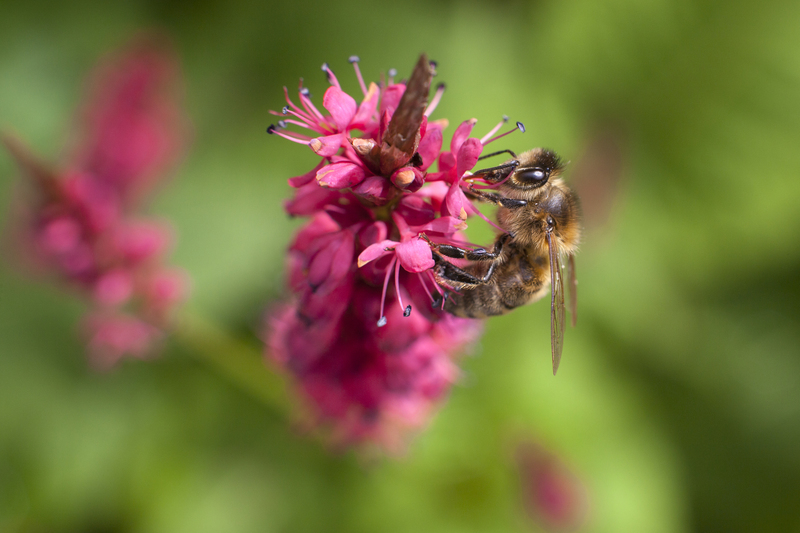Lawn Care Hacks to Win the Battle Against Summer Drought Damage
Summertime is a glorious season for outdoor living, but scorching heat and prolonged dry spells can wreak havoc on even the most robust lawns. Drought damage is a homeowner's nightmare, leaving once-lush grass patches brown, brittle, and lifeless. If you're determined to maintain a healthy, green lawn despite the harshest weather, this comprehensive guide will arm you with lawn care hacks and strategies to win the battle against summer drought damage.
Why Is Drought Damage So Destructive to Lawns?
When rainfall becomes scarce and temperatures soar, grass can struggle to absorb the water it desperately needs. Lack of moisture leads to browning, thinning, and eventual death of grass plants. Drought-stressed lawns are also more susceptible to disease and weed infestations, undermining your efforts for a lush landscape. Mastering effective lawn drought defense measures is essential for any gardener hoping to safeguard their turf.
- Dehydration deprives roots of vital growth nutrients.
- Browning and patchiness quickly appear during prolonged dry periods.
- Weeds often thrive where lawns fail, adding competition for already limited resources.
- Disease vulnerability increases as stressed lawns cannot fend off pathogens.

Understanding Your Lawn's Summer Drought Risk
Not all lawns react the same way to summer drought. Identifying your grass type and soil composition is key:
- Cool-season grasses (like Kentucky bluegrass, fescues, and perennial rye) are highly susceptible to drought stress.
- Warm-season grasses (like Bermuda, Zoysia, and St. Augustine) generally have deeper roots and better drought tolerance.
- Sandy soils lose moisture rapidly, while clay soils retain water but may impede air flow to roots.
Knowing these details helps you tailor your summer lawn care approach and maximize your lawn's resilience.
Lawn Care Hacks to Prevent Drought Damage
Ready to transform your yard into a drought-defying oasis? Use these proven lawn care tips to promote deep-rooting, shade, and healthy grass growth--no matter how harsh the summer sun gets.
1. Deep, Infrequent Watering: Train Roots to Seek Moisture
One of the most effective lawn care hacks for summer drought is to water your lawn deeply, but less often. Shallow, frequent watering causes grass roots to cluster at the surface, making them vulnerable to drying out.
- Water your lawn early in the morning before 8 a.m. This minimizes evaporation and gives grass time to dry before nightfall.
- Apply at least one inch of water per week. Use a rain gauge or an empty tuna can to track how much water your sprinklers deliver.
- Allow the soil to partially dry between waterings. This encourages roots to grow deeper, chasing moisture held in cooler, deeper earth.
2. Mow High and Sharpen Blades
Maintaining a higher cut height during drought is a critical drought defense strategy.
- Set your mower blade as high as recommended for your grass type. Taller grass shades the soil, reduces evaporation, and encourages deep root formation.
- Never remove more than one-third of the grass blade at once, as this stresses the plant during critical growing conditions.
- Always use sharp mower blades. Dull blades tear grass, increasing water loss and vulnerability to disease.
3. Mulch Grass Clippings for Extra Moisture
Instead of bagging up lawn clippings, leave them on your lawn to act as a natural mulch. This is known as the grasscycling technique.
- Clippings help retain soil moisture, reduce soil temperatures, and return vital nutrients like nitrogen to your turf.
- Mow often enough that clippings are short and won't smother your grass.
4. Protect Soil Health with Aeration
Thatch buildup and compacted soil prevent water from reaching the roots, especially during drought. Aeration (punching small holes into the soil) relieves compaction and improves water infiltration.
- Aerate your lawn annually, ideally in spring or fall.
- Focus on high-traffic areas that show signs of compaction (e.g., hard or bare spots).
- Combine aeration with overseeding for even more robust, drought-tolerant turf.
5. Feed Appropriately, But Avoid Over-Fertilization
Fertilizer can help strengthen drought-stressed lawns, but only in moderation.
- Avoid fertilizing cool-season grasses in peak summer heat, as it puts extra stress on dormant lawns.
- Use slow-release or organic fertilizers, which feed grass over time without burning roots.
- Apply at the recommended rates and times for your grass type.
6. Patch Bare Spots Early
Thin or bare spots are the first to succumb to drought. Overseeding or patching these areas in spring or early summer gives new grass a chance to establish before dry conditions.
- Select a drought-tolerant seed blend suited for your region.
- Keep newly seeded areas moist until established.
7. Choose Drought-Resistant Grass Varieties
If frequent droughts are a part of your climate, consider replacing sections of your lawn with more resilient turf species.
- Bermuda grass, buffalo grass, and Zoysia are excellent warm-season, drought-tolerant options.
- Fine fescues also offer improved drought resistance among cool-season grasses.
8. Minimize Traffic During Stress Periods
Drought-stressed lawns are easily damaged by foot traffic, toys, or vehicles. Restrict activity on your lawn during high-stress periods to prevent compaction and further injury.
9. Shade and Wind Barriers to Reduce Evaporation
Strategically plant trees, shrubs, or install garden structures to provide afternoon shade or act as windbreaks, reducing the speed at which water evaporates from your lawn.
- Deciduous trees offer summer shade but allow light through in winter, balancing the needs of your grass year-round.
Recognizing and Responding to Drought Stress Signs
Catching early signs of drought stress can make the difference between a quick lawn recovery and costly turf loss. Some symptoms to watch for include:
- Footprints or mower tracks that remain visible long after walking.
- Grass blades folding lengthwise or exhibiting a bluish-gray color.
- Patchy browning--healthy grass will bounce back once watered, but dead grass will not.
If your lawn starts to show these symptoms, employ your lawn drought defense strategies immediately: adjust watering, mow higher, and reduce traffic as much as possible.
The Role of Smart Irrigation in Summer Lawn Care
Modern technology can be a valuable partner in your fight against summer drought damage. Consider investing in a smart irrigation system for optimal water efficiency:
- Smart controllers automatically adjust watering schedules based on weather forecasts and soil moisture sensors.
- Drip irrigation and soaker hoses deliver water precisely to root zones, reducing runoff and evaporation compared to traditional sprinklers.
- Rain barrels and recycled greywater systems help supplement irrigation without increasing your water bill or environmental footprint.
Irrigation Hack: The Screwdriver Test
Stuck without a moisture meter? Push a screwdriver into the soil after watering--if it slides in easily to a depth of 6 inches, your roots have received proper hydration.
Alternative Strategies for Sustainable, Drought-Resistant Lawns
If water conservation is a priority--or if you're tired of battling extreme conditions--consider these eco-friendly options:
1. Xeriscaping and Lawn Alternatives
Replace parts of your lawn with ground covers, native grasses, or decorative gravel/mulch. Xeriscape designs require minimal irrigation and offer beautiful, sustainable landscapes.
2. Clover and Eco-Lawn Mixes
Microclover and drought-tolerant lawn seed mixes provide a green, low-maintenance surface with less water and fertilizer needs.
3. Use Organic Matter to Improve Drought Resilience
Enriching your soil with compost or organic mulch boosts its moisture retention capacity, provides vital nutrients, and encourages beneficial microbes.
- Top-dress your lawn with a thin layer (1/4 inch) of compost each spring for a green, healthy and drought-resilient lawn.

Frequently Asked Questions about Summer Lawn Drought
How often should I water my lawn in a drought?
Aim for deep watering once or twice per week rather than daily. Adjust based on rainfall and soil moisture--overwatering can be just as harmful as under-watering!
Should I mow during a drought?
Mow less often and keep your grass higher than usual; never cut more than one-third of the blade at a time. If your lawn has gone dormant (completely brown), avoid mowing until new growth appears.
Is brown grass always dead?
Not necessarily! Grass often goes dormant--tan or brown--as a survival tactic in hot, dry weather. If the crown of the plant (where roots and shoots join) is still firm and white, there's hope for regrowth once moisture returns.
Can I revive a lawn killed by drought?
Completely dead patches will need to be reseeded or sodded. Test by tugging on brown grass: if it pulls up easily and the roots are brittle/dead, it's time to replant.
Conclusion: Outsmarting Summer with Smart Lawn Care
Winning the battle against summer drought damage isn't about luck--it's about smart lawn care techniques and proactive, water-wise decisions. By watering deeply, mowing high, embracing mulch and organic matter, and choosing the right grass varieties, you'll ensure your lawn stays lush and green--even through the toughest heatwaves. Adapt your strategy through seasons, respond quickly to stress signs, and consider sustainable alternatives where possible. Your hard work will pay off with a beautiful, resilient turf you can be proud of all year long.
For more tips on lawn drought defense, local plant recommendations, and eco-friendly landscaping, explore other articles or consult with your regional extension office. Your lawn's healthiest summers are still ahead!